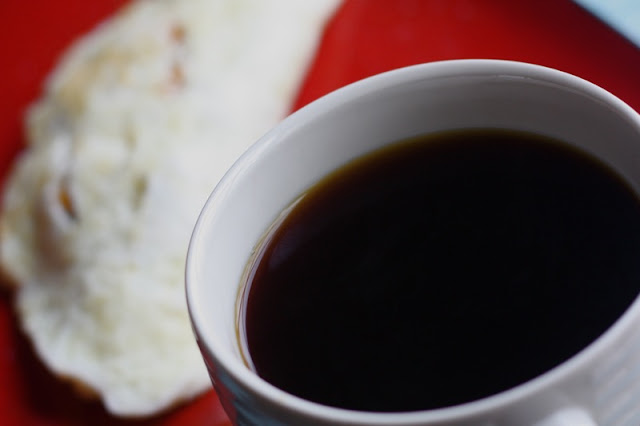When I was working at the hospital, I reflected on how macro photography was very much like chaplaincy. You get up close and personal with patients, their families and the staff. You see the good, the bad and the ugly. You can't hide anything. And yet - it's beautiful.
Beautiful.
This morning I decided that I would push myself a little bit and use the new macro extensions that Tim is letting me borrow when photographing my breakfast.
But first ...
I pushed myself a little bit in the kitchen!
(Note - these photos were taken without the macro extensions.)
I made an egg white omelet for the first time! I usually make omelets with two eggs, but since I was only using the whites, I used three egg whites.
I whisked them the whites with a little bit of milk and then poured the mixture onto a skillet that had been heated to medium-medium/high heat with melted butter on it.
I flipped it when it was cooked on the bottom and then added diced ham and shredded cheddar cheese. I folded it over, let the cheese melt and garnished the whole omelet with sea salt and pepper.
And paired the meal with some Sister's Blend coffee. It was delicious!
Bruce and I were talking about eggs while I was eating and decided that the key to egg white omelets really is what you fill it with. The whites themselves don't have much flavor, so you have to get it somewhere! I'd love to fill the next one with some spinach and mushrooms.
Now ... here are some of the shots I got WITH the macro filter!
Obviously, the macro filter isn't good for "whole meal" (or even "whole dish") shots. It's good for close up, meticulous detailed shots. In many ways, macro photography isn't good for food photography at all. But there are certain details - like pepper in this case! - that cannot be picked up without macro capability.
Some notes on the extensions:
- The set Tim let me borrow is a Kenko set. Here's a link to them on amazon.
- Macro photography is a practice that you have to build yourself up to. There are three tubes that can be used by themselves or in conjunction with one another in this set. For these photos, I just used the 12mm attachment (the smallest) on my 50mm lens.
- For those of you with the 50mm/1.8 lens, these attachments are awesome for food photography with this lens! The one complaint I have always had about the 1.8 is that it has zero macro capability and lends itself virtually useless in detailed shots. The macro attachments allow you the ability to pick up detail AND still gives you the big f/stop for more light and more narrow depth-of-field.
- You're not going to get perfect shots the first time you throw these on your camera. Be patient - hopefully over the next couple of days you'll see my photos improve!
I think that's it for now on macro photography! For those of you out there with dSLRs - do you have macro extension tubes? Or did you skip the tubes and buy the lens? Any tips?























I don't have a macro extension but DEFINITELY want one!! I'll be investing in one as soon as I can afford it, that's for sure.
ReplyDeleteThose are great! I got the 100mm macro for Christmas and I love it! It's taken some getting to used to, but I really like how it functions as a macro lens as well as a medium telephoto lens. It was a little expensive though...
ReplyDeleteI want a macro lens. Although I might have to settle for the extension tubes. Nah... I'll just save up for the lens.
ReplyDeleteDon't forget - when you focus on a point normally, of the total area in sharp focus 1/3 will be in front of the point and 2/3's behind the point. In Macro this changes and once you hit 1 to 1, it switches 2/3's in front of your focus point and 1/3 behind it. This can make a big difference given the smaller range of sharp focus area. Steve Young, Pilgrimage UCC sty1.yo@gmail.com
ReplyDelete